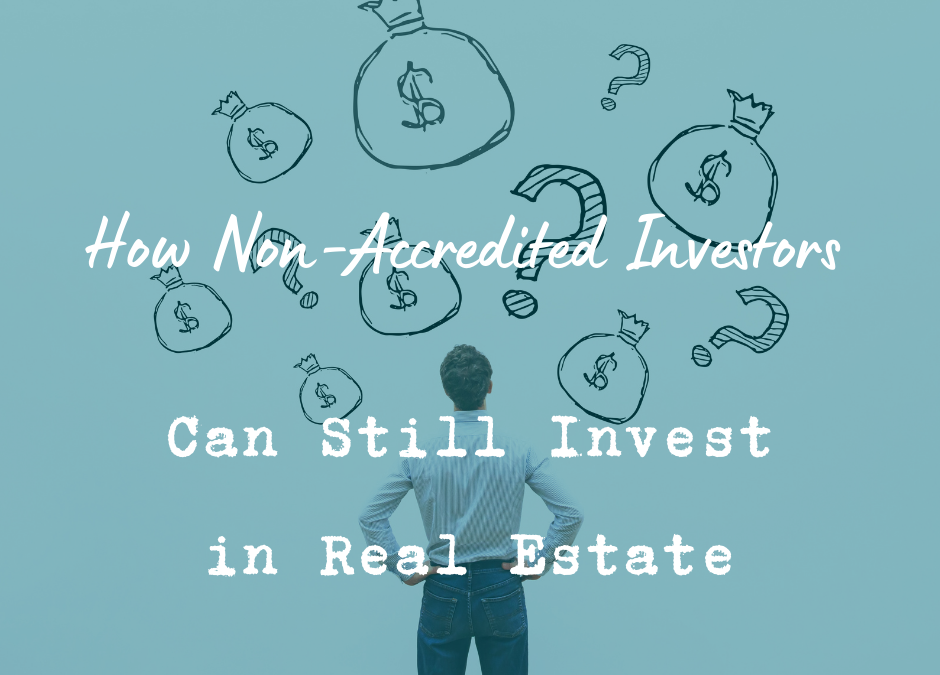Non-accredited investors can still invest in real estate. As a new investor, it’s common sense to believe there exists a wide range of experience levels in the real estate investment world. But when you start digging into potential investment opportunities and realize that sometimes only accredited investors are allowed into certain deals, it feels like a total slap in the face. However, non-accredited investors can still invest in real estate.
To add insult to injury, there’s no online class or certification you can take to become “one of them.”
So, then what?
Shout-out to All the Non-accredited Investors
If you’re not an accredited investor, and you’re reading this right now, your level of awareness is impressive. And you should pat yourself on the back.
Most new investors just start out googling terms like passive income and financial freedom, being completely unaware of accreditation and other complicated nuances. Beyond that, most people are just dreaming of “one day” when they reach a milestone like a promotion or a raise because they believe that achievement will allow them to invest.
So, high five. For real. You are one step ahead of the masses!
Investing in Real Estate When You’re Not Yet An Accredited Investor
Take this article as a bit of encouragement, because sure, finding out that some real estate opportunities are not available to you is disheartening. However, there exists an alternate bucket of vast and diverse opportunities that non-accredited investors can dive into.
Which is exactly what you’re going to learn today.
Below, you’ll find 8 ways ANYONE can invest in real estate. So keep reading (and tell all your friends).
- Buy and hold rentals
- House hacking
- Fix-and-flips
- BRRRR Strategy
- Private Lending
- Joint Venture Partnerships
- Real Estate Crowdfunding Platforms
- Private Real Estate Syndications
*None of these require you to be an accredited investor AND you can still build passive income.
Buy and Hold Rental Properties
Most people are familiar with how rental properties work. You buy a home and rent it out.
The greatest perk to these types of investments is that you’re in charge. You can choose to manage it all yourself or hire a property management firm, you can choose when to buy and when to sell, and you get to decide on renovations. The flip side to this power though, is the responsibility. Everything rests on your shoulders and when things go wrong that’s on you too.
Rental properties are definitely open to non-accredited investors, require a moderate level of work, and are long-term investments with a low-to-moderate risk.
House Hacking
House hacking is one way many people “accidentally” become landlords. They might find a place with an upstairs and downstairs unit, for example, and quickly decide to rent out part of their home.
That rental income helps pay for the mortgage on the property as a whole and voila!
This is a great option for real estate in a steeper priced area, it is open to non-accredited investors, requires a moderate level of work, and is a long-term investment with low risk.
Fix-and-Flips
If you like really detailed, hands-on investments, I’ve got the perfect thing for you!
A fix & flip, which is a short-term purchase where you renovate the property yourself and “flip” it (sell it for a profit). .This might be fun. Or it may not be.
The downside to this method is that it might take substantial capital to get started, especially if you’re in an expensive area. The cost to purchase the property, plus the funds needed for the rehab, plus money to cover the mortgage payment until the property sells should all be set aside prior to closing.
You also face immediate market volatility depending on the economy and may have to hold the property longer than expected or sell for less than expected, which would cut into your potential profit.
Fix-and-flips require high-touch hands-on presence and carry a higher risk than some other options presented here.
BRRRR Strategy
The BRRRR strategy is a combination of the buy-and-hold and the fix-and-flip options. It stands for Buy, Rehab, Rent, Refinance, Repeat.
The first half of the strategy looks just like a fix-and-flip. You buy a property that needs some TLC and give the place a face-lift.
The second half of the strategy looks much more like a buy-and-hold. Once renovations are complete, you find tenants. Once rented, you do a cash-out refinance and repeat the process with another property.
Assuming after renovations were complete, the property’s value increased substantially, you may be able to pull all of your original capital. The BRRRR strategy is extremely powerful, open to non-accredited investors, requires a high level of work, and is a long-term investment option with moderate-to-high risk.
Private Lending
One side of real estate investing that can easily be overlooked is investing in debt. I personally “fell” into this option when I got started in real estate investing and still employ this as one of my investment strategies.
Private lending is where you loan someone money to complete a fix-and-flip (or some other type of real estate transaction). You don’t have to be hands-on in the purchase, renovation, or home selling process, nor do you have to be an accredited investor. It is typically completely passive (so you know I love it!).
Most beginner investors are still working full time. Combine that lack of time (but a surplus of money) with a cash-strapped go-getter ready to do all the dirty work, and you have a deal.
As an example, you could loan someone money for their fix-and-flip for 12 months at 10% interest. They turn the house around within the 12 month period, and you earn 10% on the loan (or whatever the prorated portion of that annual interest rate is). Your risk is relatively low because it’s backed by the property (collateralized) and your workload is low. You don’t have to be accredited for these short-term investments either.
Joint Venture Partnerships
If you have the capital plus some skills to contribute, you might be a great potential joint venture partner.
A JV partnership is where a small group invests together and the property renovations and management tasks are split up between them. Each person has an active role with no passive investors.
This type of opportunity is open to non-accredited investors, has a high level of work, a moderate level of risk, and a flexible timeline depending on the project.
Real Estate Crowdfunding Platforms
Real estate crowdfunding platforms are much like Kickstarter, but for real estate. These platforms contain opportunities for a variety of projects from fix-and-flips to large-scale value-add multifamily projects.
You invest capital in exchange for a portion of the returns without having to do any of the work. Most of these types of opportunities are for accredited investors only. However, there are a few real estate crowdfunding sites that offer REITs (real estate investment trusts) for non-accredited investors.
REITs don’t give you benefits of direct ownership, but they are great vehicles for passive investing and typically require low minimum investments with low risk and a low threshold of work involved.
Private Real Estate Syndications
Group investments where people pool their resources to invest in a large asset is a real estate syndication deal. At first glance, this may sound a lot like a joint venture situation. However, JV investors each have a specific, active role in managing the property. In a real estate syndication, most of the investors are passive – meaning they won’t be hands-on with the property renovations or making any big decisions.
Many real estate syndications are only open to accredited investors, due to SEC regulations. However, there are a wide variety of opportunities open to non-accredited investors as well.
Since the opportunities for non-accredited investors aren’t able to be publicly advertised, you have to know someone who’s part of a general partnership to gain access. This is where, as a non-accredited investor, you have to be willing to network with people to find deals that are open to your non-accredited capital. This is also where companies like Ohana Investment Partners come in. We find each other, build relationships and bring offerings for non-accredited, yet sophisticated investors, to people like YOU. But, we have to follow the guidelines to be able to present these opportunities to you.
What does that mean to you? The first step is to join the Ohana Investor Club, then book a call with us to discuss your investment experience and goals, then (after the wait period) we are able to get offerings to you to see if they fit your investment goals. And it’s a match made in heaven!
These deals require a low level of work (research and connection upfront) and carry low risk as a long-term investment.
Takeaways
If you’re a new investor and/or not accredited at this point, serious kudos to you. You reading this article exhibits serious ahead-of-the-curve-ness on the way to building passive income.
The 8 ways we examined today (out of the infinite number of possibilities) you can invest in real estate as a non-accredited investor are:
- Buy and Hold Rentals
- House Hacking
- Fix-and-flips
- BRRRR Strategy
- Private Lending
- Joint Venture Partnerships
- Real Estate Crowdfunding Platforms
- Private Real Estate Syndications
Realizing that certain opportunities are not available could get you down. But turn that frown upside down! There are various, fast and powerful ways non-accredited investors can accumulate wealth through real estate.
Want to learn more about investment opportunities open to you? Sign up for the Ohana Investor Club today!

